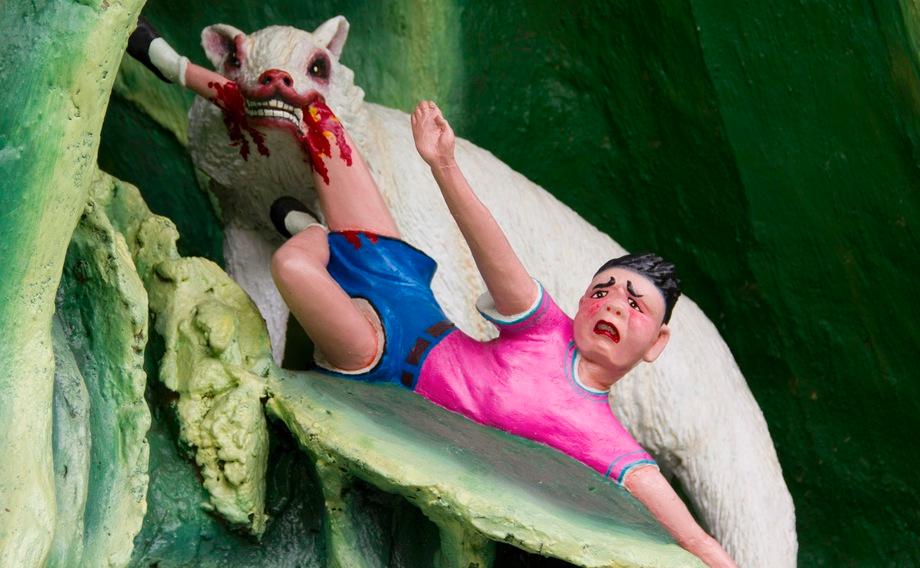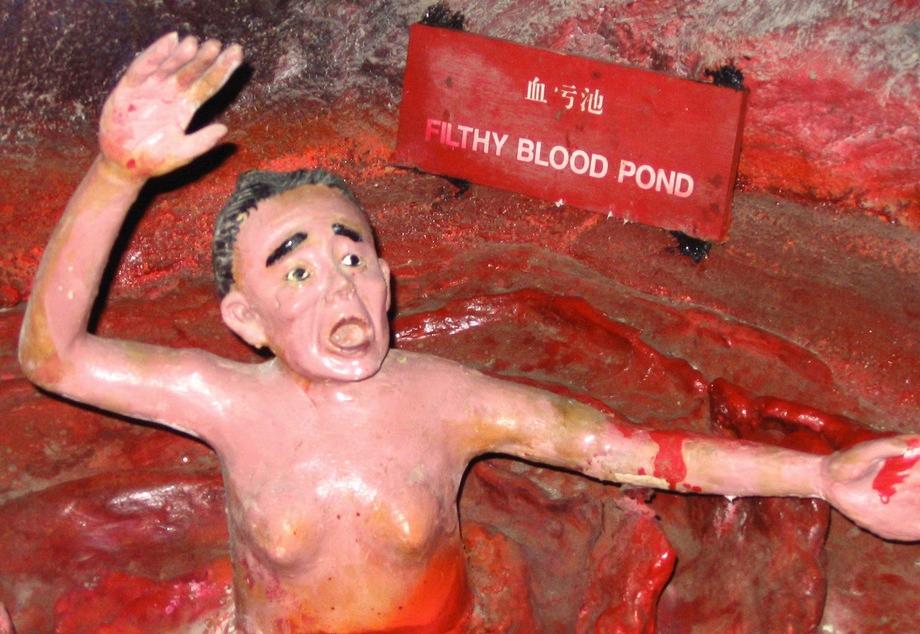Tour the Horrors of Buddhist Hell at this Graphically Violent Theme Park
Atlas Obscura on Slate is a new travel blog. Like us on Facebook, Tumblr, or follow us on Twitter @atlasobscura.
Brothers Aw Boon Haw and Aw Boon Par gained fame and fortune in the early 20th century selling their self-made Tiger Balm, but their legacy goes beyond ointment. In 1937, with the aim of instilling traditional Chinese values, the siblings built Haw Par Villa, a Singapore park with 1000 statues and 150 dioramas depicting surreal scenes from Chinese mythology, aspects of Confucianism, and terrifying visions of Buddhist hell.
The Confucian virtue of filial piety finds its expression in a statue of a woman breastfeeding her starving, toothless mother-in-law. The giant blue crab with a woman's smiling head plopped on top is of murkier mythological origin, as is a domestic scene showing a clothed, bipedal reindeer and tortoise sitting at a table drinking tea.
The garden's most memorable attraction is its Ten Courts of Hell section, which provides a vivid look at the punishments awaiting wicked souls in the layers of the underworld. Decapitations, disemboweling, and drownings in "Filthy Blood Pond" are all on show.
Unconventional theme parks:


